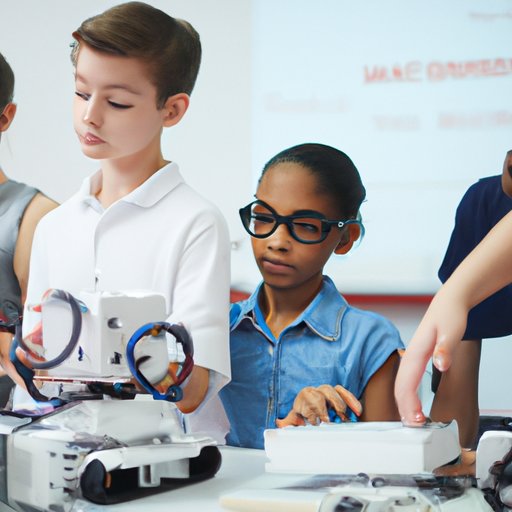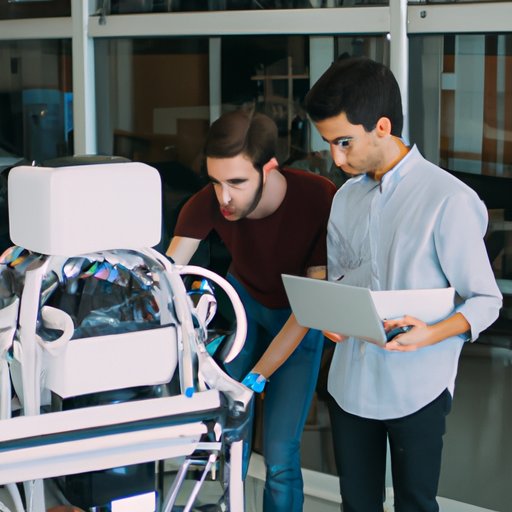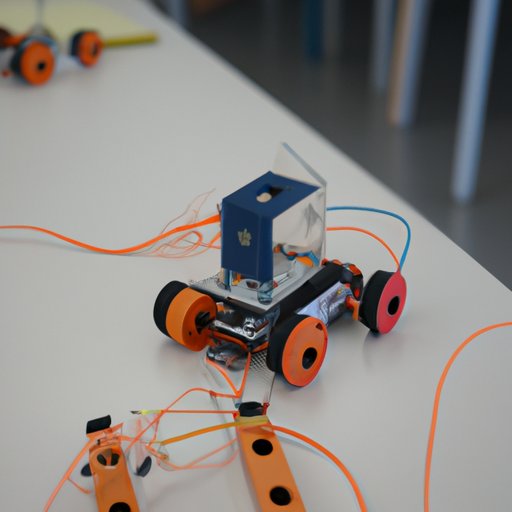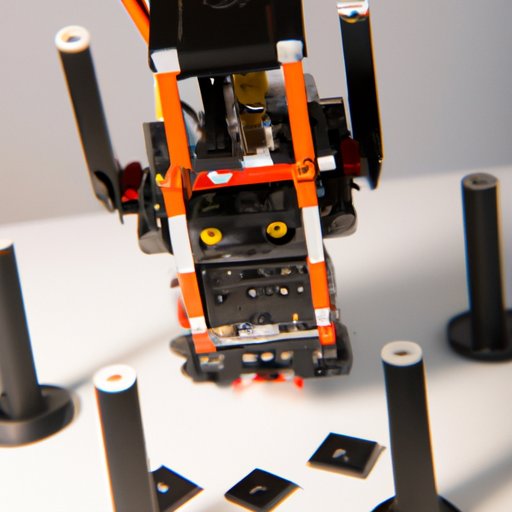Introduction
Robotics is a rapidly growing field that has applications in many industries, from manufacturing to healthcare. But what exactly are robots, and how do they work? In this article, we’ll explore the components of robots and how they work together, examine the different types of robotic controls and their functions, investigate how artificial intelligence impacts robot functionality, understand how sensors are used to guide robotics, and analyze the benefits and challenges of robotics in modern society.
Exploring the Components of Robots and How They Work Together
To understand how robots work, it’s important to first understand the components that make up a robot. These components can be broken down into three main categories: physical components, mechanical components, and software components.
Physical Components
The physical components of a robot are its body parts, such as arms, legs, hands, and eyes. These parts are typically made out of metal, plastic, or other materials. They need to be strong enough to withstand the forces of movement, but light enough to allow for agility.
Mechanical Components
The mechanical components of a robot are the motors and actuators that allow it to move. Motors convert electrical energy into mechanical energy, while actuators translate the mechanical energy into motion. Motors and actuators can be powered by electricity, compressed air, or other sources of energy.
Software Components
The software components of a robot are the programs and algorithms that enable it to process information and make decisions. These components include sensors, which detect changes in the environment and provide feedback to the robot, and controllers, which use the feedback from the sensors to adjust the robot’s movements.

Examining the Types of Robotic Controls and Their Functions
The type of robotic control used depends on the task the robot is performing. There are three main types of robotic control: point-to-point control, contouring control, and path control.
Point-to-Point Control
Point-to-point control is used when the robot needs to move from one point to another in a straight line. It is the simplest and most common type of robotic control.
Contouring Control
Contouring control is used when the robot needs to follow a curved path. It requires more complex programming than point-to-point control, but it allows the robot to move more efficiently and accurately.
Path Control
Path control is used when the robot needs to follow a predetermined path. It requires the most complex programming, but it allows the robot to move quickly and precisely.

Investigating How Artificial Intelligence Impacts Robot Functionality
Artificial intelligence (AI) is a field of computer science that focuses on creating machines that can think and act like humans. AI has become increasingly important in robotics, as it allows robots to learn from their experiences and make decisions based on their observations.
What is AI?
AI is a field of computer science that focuses on creating machines that can think and act like humans. AI algorithms are used to create systems that can learn from data, recognize patterns, and make decisions. AI technologies have been successfully applied to robotics, allowing robots to learn from their experiences and make decisions based on their observations.
Benefits of AI in Robotics
AI has several advantages when it comes to robotics. AI algorithms can be used to create robots that can learn from their experiences, recognize patterns, and make decisions. Additionally, AI can help robots adjust their behavior based on changing conditions, allowing them to respond to their environment in real-time. According to a study conducted by the University of Texas at Austin, “AI-enabled robots are able to perform tasks with greater accuracy and efficiency than traditional robots.” 1
Challenges of AI in Robotics
While AI has many benefits, it also poses some challenges. AI algorithms are complex and require a lot of data to be trained, which can be difficult and time consuming. Additionally, AI algorithms can be expensive to develop and maintain. Finally, AI algorithms can be unpredictable, which can lead to unexpected behavior in robots.

Understanding How Sensors Are Used to Guide Robotics
Sensors are essential components of robotics, as they allow robots to interpret their environment and make decisions. Sensors can detect changes in the environment, such as temperature, humidity, and sound, and provide feedback to the robot.
Types of Sensors
There are many different types of sensors, including optical, infrared, acoustic, and ultrasonic sensors. Each type of sensor is designed to detect a specific type of input. For example, optical sensors are used to detect light, while infrared sensors are used to detect heat.
Sensor Accuracy and Reliability
Sensor accuracy and reliability are important factors when selecting sensors for robots. Sensors must be accurate and reliable in order to provide accurate feedback to the robot. Additionally, sensors must be able to withstand harsh environmental conditions, such as extreme temperatures and vibrations.
Sensor-Based Navigation
Sensor-based navigation is a technique used by robots to navigate their environment. This technique uses sensors to detect obstacles and landmarks in the environment, and then uses this information to create a map of the area. The robot then uses this map to determine the best path to take to reach its destination.
Analyzing the Benefits and Challenges of Robotics in Modern Society
Robotics is becoming increasingly important in modern society, as robots are used in many industries, from manufacturing to healthcare. However, there are both benefits and challenges associated with robotics.
Benefits of Robotics
Robotics offers many benefits, including increased efficiency and accuracy. Robots can often perform tasks faster and more accurately than humans, which can reduce costs and increase productivity. Additionally, robots can be used to perform dangerous tasks that would be too risky for humans. According to a study conducted by the Massachusetts Institute of Technology, “Robots can be used to automate processes that are too dangerous or tedious for humans.” 2
Challenges of Robotics
Despite the benefits of robotics, there are also some challenges associated with the technology. For example, robots can be expensive to purchase and maintain. Additionally, robots can be difficult to program, as they require complex algorithms and programming languages. Finally, robots can be unreliable, as their performance may vary depending on their environment.
Conclusion
In conclusion, robots are complex machines that require a variety of components, including physical, mechanical, and software components. Different types of robotic controls are used to control the robot’s movements, and artificial intelligence is used to give the robot the ability to learn and make decisions. Sensors are used to detect changes in the environment and provide feedback to the robot. Finally, robotics offers many benefits, but there are also some challenges associated with the technology.
This article has provided an in-depth exploration of how robots work, examining the physical and mechanical components, types of robotic controls, artificial intelligence, and sensors. It has also investigated the benefits and challenges of robotics in modern society.
(Note: Is this article not meeting your expectations? Do you have knowledge or insights to share? Unlock new opportunities and expand your reach by joining our authors team. Click Registration to join us and share your expertise with our readers.)
